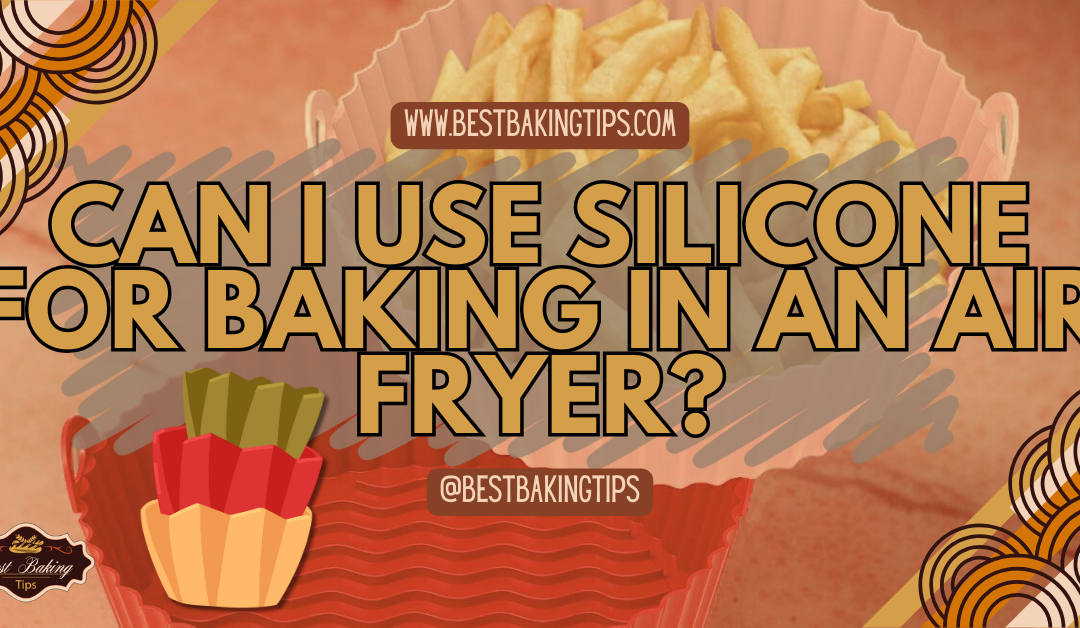==================
Affiliate Statement
Best Baking Tips is supported by our audience. When you purchase through one of our links, we may earn a small affiliate commission. As an Amazon Associate I earn from qualifying purchases. Your cost is not affected.
==================
Silicone for baking provides an innovative solution for home cooks seeking convenience and crispy results in their air fryer creations.
As bakers, we’re always on the lookout for tools and techniques that can elevate our creations to new heights. Today, we delve into a subject that holds immense value for bakers everywhere: silicone for baking in air fryers. With the rise of these handy kitchen appliances, the marriage of silicone molds and air frying presents a tantalizing opportunity. Let’s explore the potential and practicality of using silicone bakeware in air fryers, uncovering the secrets to achieving crispy, delectable treats in a breeze.
Can I Use Silicone for Baking in an Air Fryer? Understanding Safety and Tips
Silicone bakeware has revolutionized home baking with its flexibility, non-stick properties, and ease of cleaning. As air fryers become increasingly popular kitchen appliances, many home cooks are wondering whether they can combine the convenience of silicone molds with the quick cooking times and crispy results of air frying.
In short, using silicone molds in an air fryer is not only possible but also advisable. They can withstand the high temperatures typically produced by air fryers without releasing harmful chemicals.

Understanding how to properly use silicone bakeware in an air fryer is crucial for achieving the best baking results. These molds must be placed correctly within the air fryer basket to allow for optimal air circulation, which is key to the air frying process.
Additionally, cooks must be aware of the air fryer’s temperature settings and adjust their baking times accordingly to avoid under or overcooking.
Through proper use, silicone bakeware in an air fryer can make quick and delicious baked goods, offering a new and efficient way to bake.

Key Takeaways
- Silicone molds are ideal for air fryer baking due to their high heat resistance.
- Correct placement and temperature settings are crucial for successful baking with silicone in air fryers.
- Ease of use and cleaning makes silicone bakeware a practical choice for air frying enthusiasts.
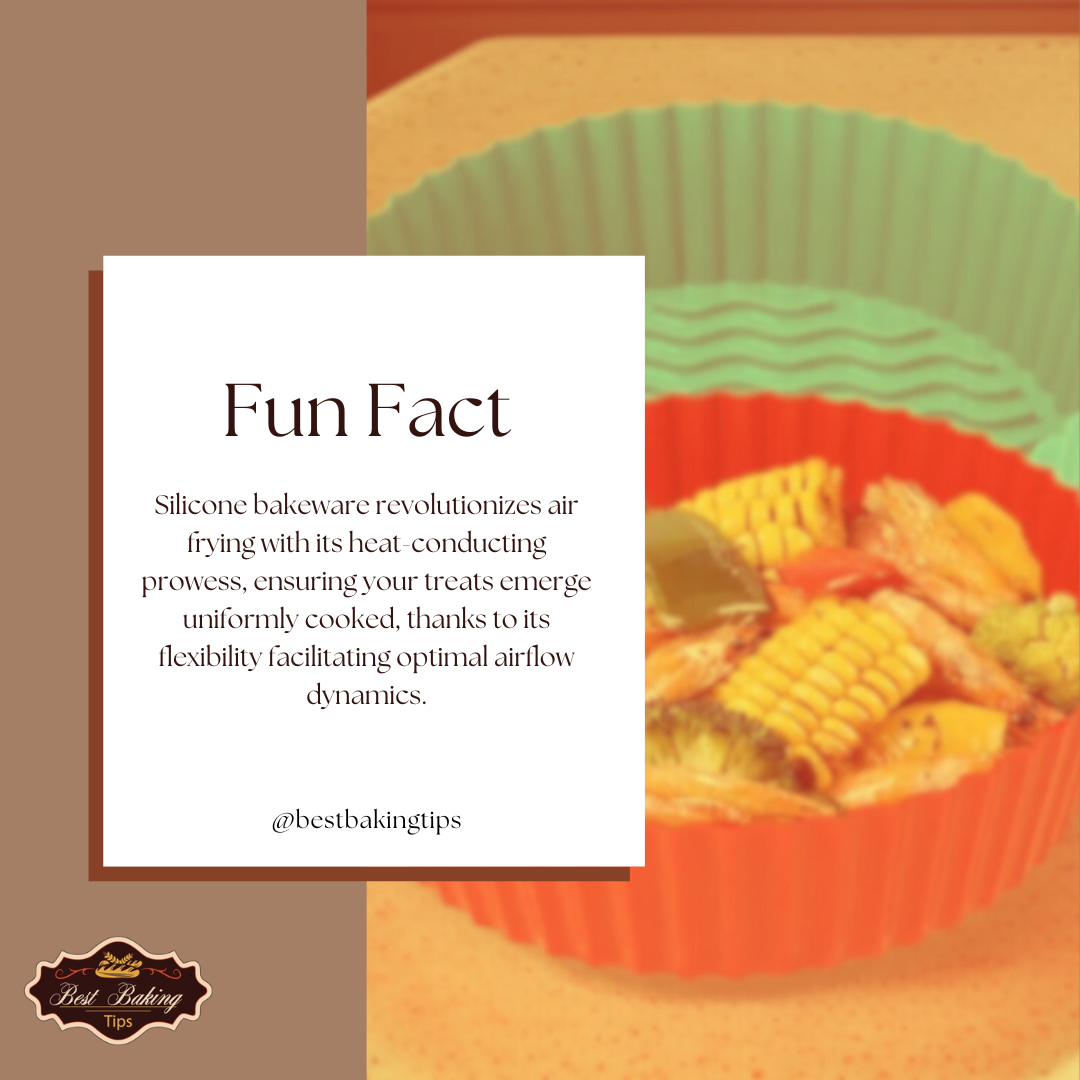
Basics of Silicone Bakeware

Silicone bakeware has gained popularity due to its versatility and ease of use. These bakeware pieces are made from a durable, non-stick material known as silicone, which is a synthetic rubber.
Their main features include:
- Heat Resistance: Silicone can withstand temperatures from very low to very high, typically up to 428°F (220°C).
- Durability: It does not warp or degrade with regular use.
Silicone bakeware comes in various shapes and sizes, from muffin cups to bread pans, making it suitable for a wide range of baking needs.
When it comes to cleaning, silicone is a dream for bakers:
- Easy to clean, either by hand or in the dishwasher.
- Non-stick qualities reduce the need for extra oils or sprays.
Safety is a key concern for consumers, and silicone bakeware is safer for use in all types of ovens. They:
- Do not leach chemicals into food when used at recommended temperatures.
- Are generally safe for use in microwave ovens, conventional ovens, and freezers.
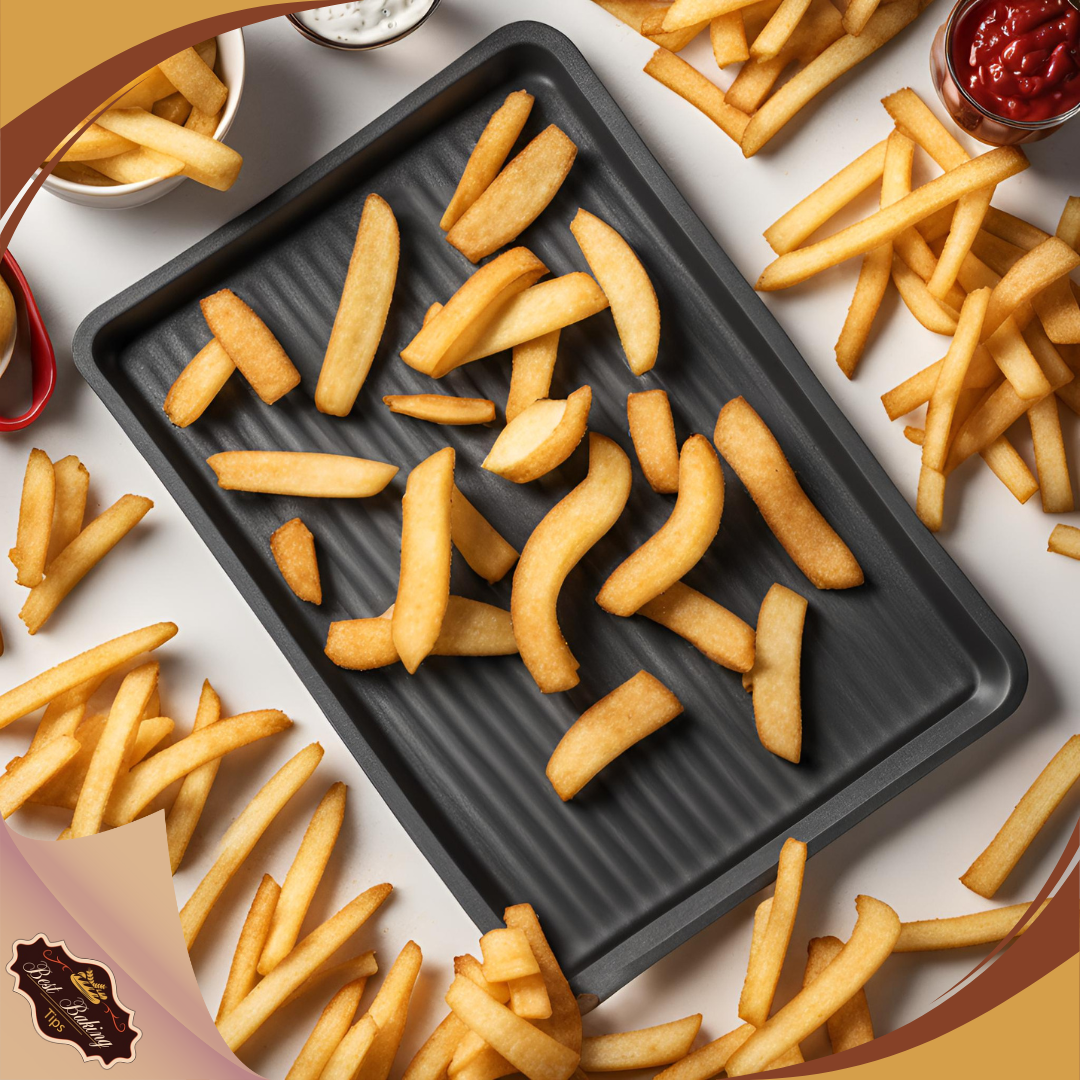
Lastly, it’s important to note that when using silicone bakeware, one should ensure proper spacing. This allows for air circulation and even cooking.
By adhering to manufacturer guidelines, users can experience optimal results with their silicone bakeware in various cooking environments, including air fryers.
See in practice how silicone molds can tolerate temperatures above 440℉ and are suitable for air fryers.
Understanding Air Fryers

Air fryers operate on the principle of convection cooking, where hot air is circulated around the food to create a crispy layer, mimicking the results of deep-frying.
Typically, air fryers heat up quickly and cook food faster than conventional ovens due to their compact size and powerful heating elements.
They consist of a heating mechanism and a fan located at the top of the unit. Below the heating element, there is a basket where the food is placed. This basket allows for air to flow around the food from all directions.
Common temperature ranges for air fryers are between 300°F to 400°F (149°C to 204°C), with some models having the capability to go slightly higher or lower.
Below are the key features of air fryers:
- Temperature Control: Users can adjust cooking temperatures, which allows for a variety of food to be cooked at proper settings.
- Timer: They come with timers that help in monitoring the cooking process and prevent overcooking.
- Size and Capacity: Air fryers vary in size, typically between 2 quarts to 7 quarts, catering to different family sizes and needs.
- Ease of Cleaning: Most air fryers feature non-stick baskets and are often dishwasher safe.
Cooking with silicone molds in an air fryer is generally considered safe, as silicone can withstand high temperatures well above what most air fryers produce.
It’s important to ensure that the silicone mold or basket used is designed for high-heat cooking and is placed correctly in the air fryer to allow for optimal air circulation.
Benefits of Using Silicone in Air Fryers
When it comes to air frying, silicone molds and baskets stand out for their compatibility and convenience.
They are designed to withstand high temperatures typically exceeding the maximum settings of most air fryers, which rarely go above 400℉. This makes silicone molds safe to use in air fryers, allowing for versatility in baking and cooking.
Silicone’s non-stick properties ensure that food releases easily without the need for additional oils or greasing, which aligns with the health-oriented approach of air frying.
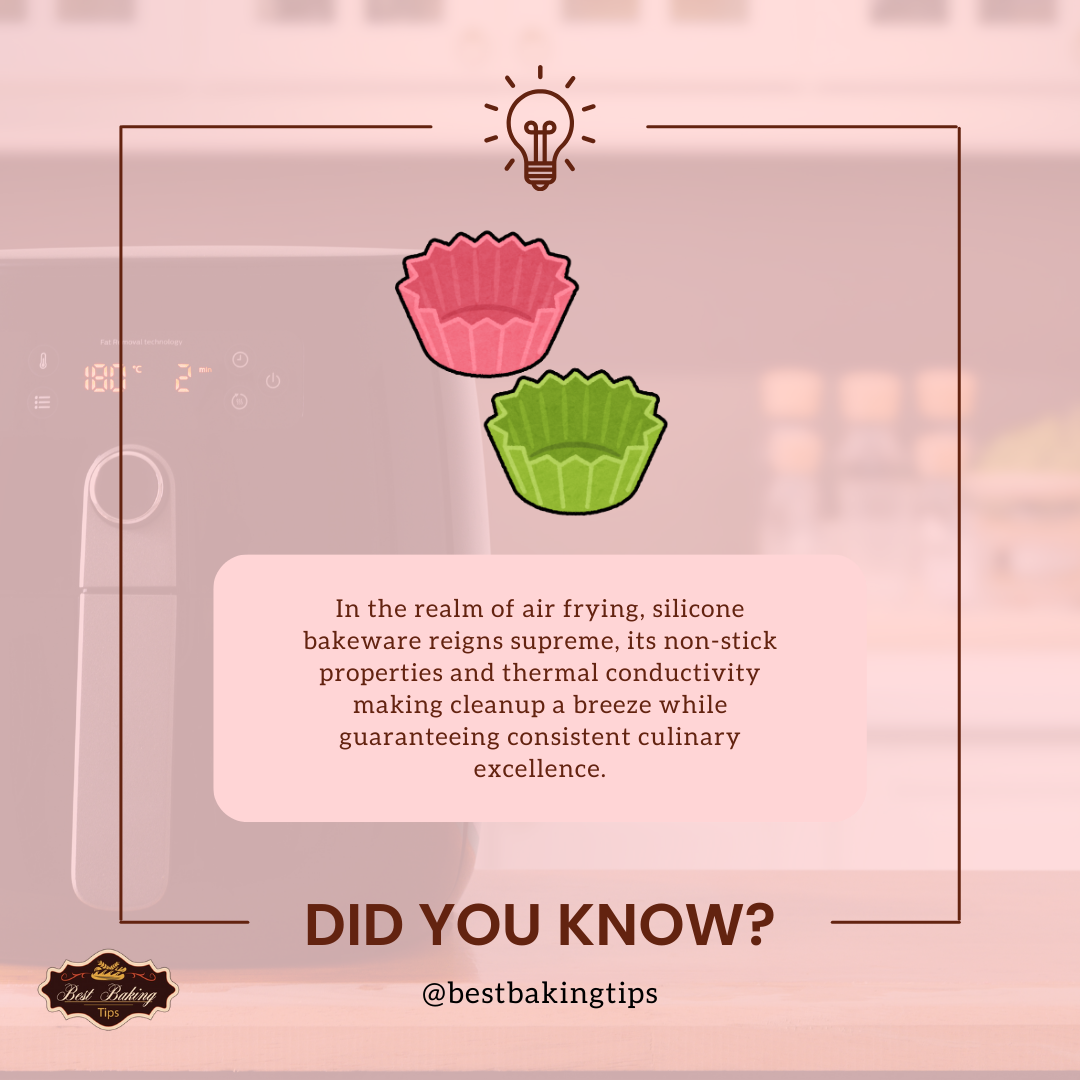
The material is also known for its even cooking capabilities, contributing to uniformly prepared meals with a satisfying texture.
- Resistant to High Heat: Can tolerate temperatures well above most air fryer settings.
- Non-stick Surface: Simplifies food removal and reduces the need for extra oil.
Furthermore, using silicone in air fryers enhances the cleaning process, as these accessories can typically be easily washed by hand, or are dishwasher safe.
They offer protection to the air fryer’s basket or tray, reducing wear and tear.
- Ease of Cleaning: Often dishwasher safe, making post-cooking cleanup a breeze.
- Protects Appliance: Acts as a barrier, minimizing damage to the fryer’s interior.
Finally, silicone liners and molds come in various shapes and sizes, granting cooks the flexibility to prepare a wide range of dishes.
They are an environmentally friendlier option compared to single-use parchment paper or aluminum foil, thereby also reducing waste.
- Versatile Shapes and Sizes: Allow for an array of culinary experiments.
- Eco-friendly Option: Reusable, cutting down on disposable material use.
Safety Considerations

When using silicone in an air fryer, safety is paramount to prevent any accidents or health hazards.
Silicone molds are generally considered safe for use in air fryers due to their high heat tolerance. Most quality silicone can withstand temperatures that are typically higher than the maximum temperature settings of air fryers.
Temperature Threshold:
Silicone’s heat resistance usually ranges between 430°F to 480°F. It’s essential to check the manufacturer’s specifications to ensure the silicone product is suitable for use at the air fryer’s temperature settings.
Stability and Placement:
For safety and optimal cooking results, it’s important to place silicone molds on a flat tray or rack within the air fryer to prevent warping or melting. Misplacement can lead to unstable cooking conditions and poor results.
Chemical Stability:
High-quality silicone is inert, meaning it does not react with food or emit harmful chemicals at high temperatures. However, buyers should be cautious of low-quality silicone that might not meet health and safety standards.
Air Circulation:
Air fryers cook by circulating hot air. It’s critical to allow space around the silicone mold for air to flow freely, ensuring even cooking and preventing overheating in localized areas.
Use Cases:
Silicone molds are convenient for a variety of dishes, offering easy food removal and a non-stick surface, which adds to their safety by reducing the need for cooking sprays or oils.
Optimal Silicone Bakeware Types for Air Fryers

When selecting silicone bakeware for air frying, certain types are more optimal than others. Here is a list of silicone bakeware types that are well-suited for use in an air fryer:
- Silicone Molds: These are highly compatible with air fryer baking. They can tolerate high temperatures, often above what air fryers reach, and come in various shapes, making them versatile for different recipes.
- Silicone Baskets: Perfect for air frying as they allow air to circulate around the food. A step-by-step guide on using silicone baskets suggests washing and drying them before use and placing them directly into the air fryer’s basket to hold food items.
- Silicone Liners: These accessories facilitate easier cleanup and prevent sticking. The best silicone air fryer liners are chosen for their durability and dishwasher-safe properties.
When using these bakeware types, it’s important to ensure they are:
- BPA-Free and Food Grade: This means no harmful chemicals will leach into your food when heated.
- Properly Sized: Bakeware should fit comfortably within the air fryer to allow for optimum air circulation.
Additionally, the bakeware should be placed such that there is enough space around them for hot air to circulate, ensuring even cooking.
Preparing Silicone Bakeware for Air Frying
When using silicone bakeware in an air fryer, the cook must first ensure the bakeware is thoroughly cleaned.
Washing silicone molds with warm soapy water is recommended to remove any residue or dust from storage or manufacturing.
Before placing silicone bakeware in the air fryer, the user should dry the bakeware completely to prevent steam within the cooking environment.
After cleaning, the following steps should be taken to prepare silicone bakeware for use in an air fryer:
- Check Temperature Tolerance: Confirm that the silicone bakeware can handle the air fryer’s temperature, usually up to 440℉ or 250℃.
- Proper Placement: Place the silicone mold on a flat surface or tray in the air fryer for stability.
- Spacing: Ensure that there is adequate room around the silicone mold for air circulation.
- Preheating: Depending on the recipe, preheating the air fryer can lead to more consistent cooking results.
Also, the cook should be aware of the cooking time and temperature adjustments required for air frying compared to conventional ovens.
Silicone molds often facilitate even heat distribution and easy food release, but the user should always use caution to avoid overheating and potential warping of the material.
For further information on how to safely and effectively use silicone bakeware in your air fryer, consider reviewing advice from Baking Kneads or exploring detailed usage tips on Home Cooking Tech.
Temperature and Timing Guidelines

When using silicone molds or baskets for baking in an air fryer, understanding the correct temperature and timing is crucial.
Silicone bakeware is generally heat-resistant and can tolerate temperatures well above what air fryers typically reach. Typically, these molds are safe at temperatures up to 440℉, while most air fryers do not exceed 400℉.
For those transferring traditional oven recipes to an air fryer, a key tip is to check the food at 30 percent of the original cooking time due to the more efficient circulation of hot air in the air fryer. This will prevent overcooking and ensure that the final product is done to perfection.
Here are some general guidelines for using silicone in an air fryer:
- Start at a lower temperature, around 325℉, and increase as needed.
- Always check the item early to gauge cooking progress.
- Use air fryer-specific recipes as a baseline when available.
Remember, cooking times can vary based on the air fryer model and the size and thickness of the food.
Shaking or flipping the food periodically can promote even cooking. For detailed examples, you can refer to information on baking in an air fryer and the use of silicone molds.
Maintenance and Cleaning of Silicone Bakeware
Maintaining silicone bakeware is straightforward, given its non-stick properties. Here are some key maintenance tips:
- Before First Use: Wash the bakeware in warm, soapy water to remove any residues from the manufacturing process.
- Regular Cleaning: After each use, it should be cleaned with hot water and a mild detergent. For best results, use a soft sponge or a cloth; abrasive cleaners or scouring pads can damage the surface.
Cleaning silicone bakeware properly ensures longevity and safe use in appliances like air fryers. For the occasional tough clean, these steps are recommended:
- Oven Method: Place the bakeware in the oven at 350°F for 10 minutes to loosen the bits.
- Soak: After heating, soak in hot water to further ease the cleaning process.
- Baking Soda: For an oily residue, sprinkle baking soda on the surface, rub gently with a sponge, and then rinse.
Dry Thoroughly: Always dry the bakeware thoroughly before storing to prevent mold and mildew growth.
It’s important to confirm that your silicone bakeware complies with the recommended usage temperatures of your air fryer.
Users can benefit from the easy food removal and even cooking when using silicone molds in an air fryer.
Remember to not overload the air fryer with silicone accessories to allow proper air circulation.
Troubleshooting Common Issues

When using silicone molds in an air fryer, users might encounter some common issues. Here’s how to address them effectively:
- Uneven Cooking:
- Make sure to place silicone molds in a single layer.
- Use a lightweight silicone mold to allow for proper air circulation.
- Over-Browning:
- Lower the temperature by 5-10 degrees if food is browning too quickly.
- Check food periodically during cooking to prevent burning.
- Food Sticking to Molds:
- Though silicone is generally non-stick, a light coat of oil can ensure easy removal of foods.
- If persistent, consider silicone molds of higher quality with better non-stick properties.
- Cooking Times Varying:
- Individual air fryer models may cook at different rates. Adjust times as necessary.
- Refer to the specific model’s guide for recommended temperature settings.
- Mold Shape Deforming:
- Place molds on a flat surface within the air fryer to maintain shape.
- Opt for thicker silicone molds that hold their shape better under the heat.
- Limited Mold Size:
- Silicone molds must be small enough to fit in the air fryer without touching the sides.
- Check the air fryer’s interior dimensions before purchasing molds.
It’s important for users to take into account that air fryers are designed to work best with good air flow. Therefore, when using silicone molds, they should avoid overcrowding and allow space for air to circulate, ensuring even cooking and the desired crispiness.
Best Practices for Baking with Silicone in Air Fryers

When baking with silicone molds or mats in air fryers, adhering to specific guidelines ensures optimal results.
The user should first verify that the silicone accessory is compatible with their specific air fryer model and size.
Typically, silicone molds are heat-resistant up to 440℉, and most air fryers operate below this temperature, making them quite suitable for use together.
Preparation
- Wash and Dry: Thoroughly wash a new silicone basket or mat with warm soapy water before first use.
- Placement: Ensure the basket is placed correctly within the air fryer to allow for adequate air circulation.
Cooking
- Spacing: Lay out food items evenly within the silicone mold to avoid overcrowding.
- Temperature: If using a mat, add a few extra minutes to the cooking time to compensate for the insulation it provides.
- Layering: Arrange food in a single layer for even cooking and crispiness.
Post-Cooking
- Cooling: Give the silicone a few minutes to cool for easier handling and to prevent damage.
- Cleaning: Clean the silicone accessory promptly after use to maintain its condition.
Silicone for Baking: Exploring Its Role in Air Fryer Cooking
To end this, using silicone bakeware in air fryers wasn’t just a possibility—it was highly recommended. Its ability to handle high heat, its non-stick nature, and how easy it was to clean made it a top pick for baking. Getting the placement and temperature just right was key for perfect results, ensuring our dishes were cooked evenly and crispy every time. With all these benefits, it’s clear that adding silicone molds or baskets to your air fryer setup is a smart move.
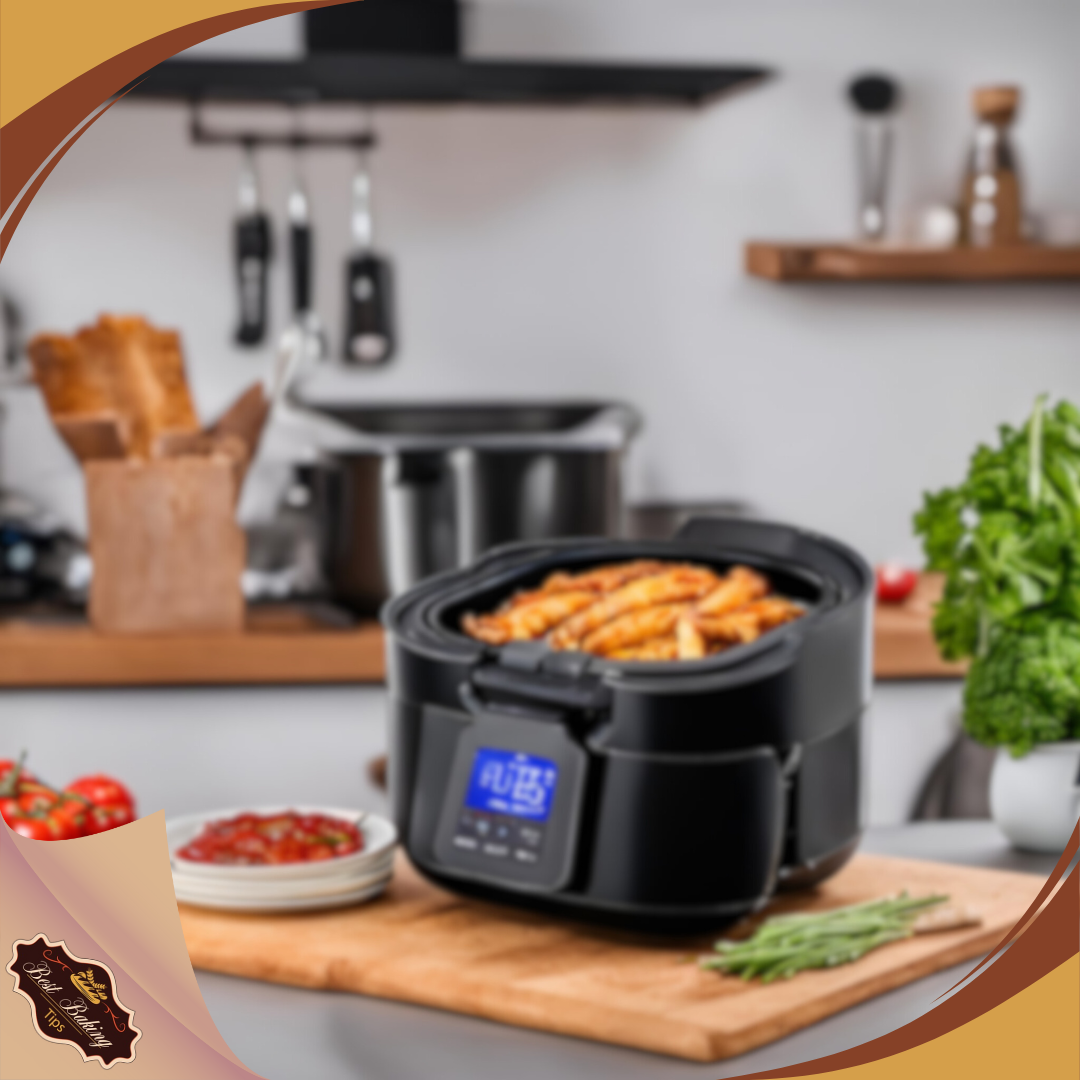
Ready to dive into the delicious world of air frying with silicone? Give it a whirl! Happy baking!
Frequently Asked Questions
When using silicone in an air fryer for baking purposes, it is essential to consider temperature tolerance and the impact on air circulation to ensure optimal results.
How can I safely use a silicone basket in my air fryer?
You can safely use a silicone basket in your air fryer by washing it thoroughly before use, making sure it’s completely dry, and then placing it correctly within the air fryer basket. Adding food and cooking as required should produce crispy results. How to Use Silicone Basket in Air Fryer provides a useful guide.
Are air fryer liners with holes necessary for proper cooking?
Air fryer liners with holes are necessary for maintaining proper air circulation, which is crucial for achieving even cooking and crispiness. Without the holes, the liners can impede the flow of air and potentially affect the cooking outcome.
Is it possible to bake using silicone cups in an air fryer?
Yes, silicone cups can be used for baking in an air fryer. They can withstand the high temperatures typically generated by these appliances. It is important to place them securely to avoid warping. Can Silicone Molds Really Be Used in an Air Fryer? offers insights into their use.
What are the reviews saying about silicone air fryer liners?
Reviews often highlight the ease of cleaning and the non-stick qualities of silicone air fryer liners. However, they also note that liners can affect cooking times and the crispiness of food. This is due to their impact on air circulation. Are Air Fryer Silicone Liners Any Good? discusses the pros and cons.
Can silicone accessories be used with an Air Fryer Ninja model?
Yes, silicone accessories can be used with an Air Fryer Ninja model. Just make sure they are designed to withstand the temperatures it operates at. They should be placed properly to ensure stability and safety during cooking. Always consult the manufacturer’s recommendations before use.
For baking in an air fryer, is it better to use silicone molds or parchment paper?
Silicone molds are preferred for baking in an air fryer over parchment paper when durability and reusability are considered. They also provide a more stable vessel for batter and dough.
However, parchment paper can be used for quick, disposable lining to prevent sticking, if air circulation is not compromised.
Explore the Sweet World of Baking Magic with Us!
Join us on our social media channels for a delightful journey into the art of baking with plant-based ingredients and beyond! Discover tantalizing recipes, insightful product reviews, and connect with a vibrant community passionate about making every baking endeavor worthwhile.
- Follow us on Facebook for mouthwatering recipes and live baking sessions!
- Get inspired on Instagram with stunning visuals and behind-the-scenes baking adventures.
- Pin your favorite recipes and baking hacks on Pinterest for easy access anytime, anywhere.
- Stay updated with the latest baking trends and tips on Twitter.
- Tune in to our YouTube channel for in-depth tutorials and baking masterclasses.
- Let’s dance through the baking journey on TikTok with fun and engaging content!
Don’t miss out on the fun – join our baking community today!

